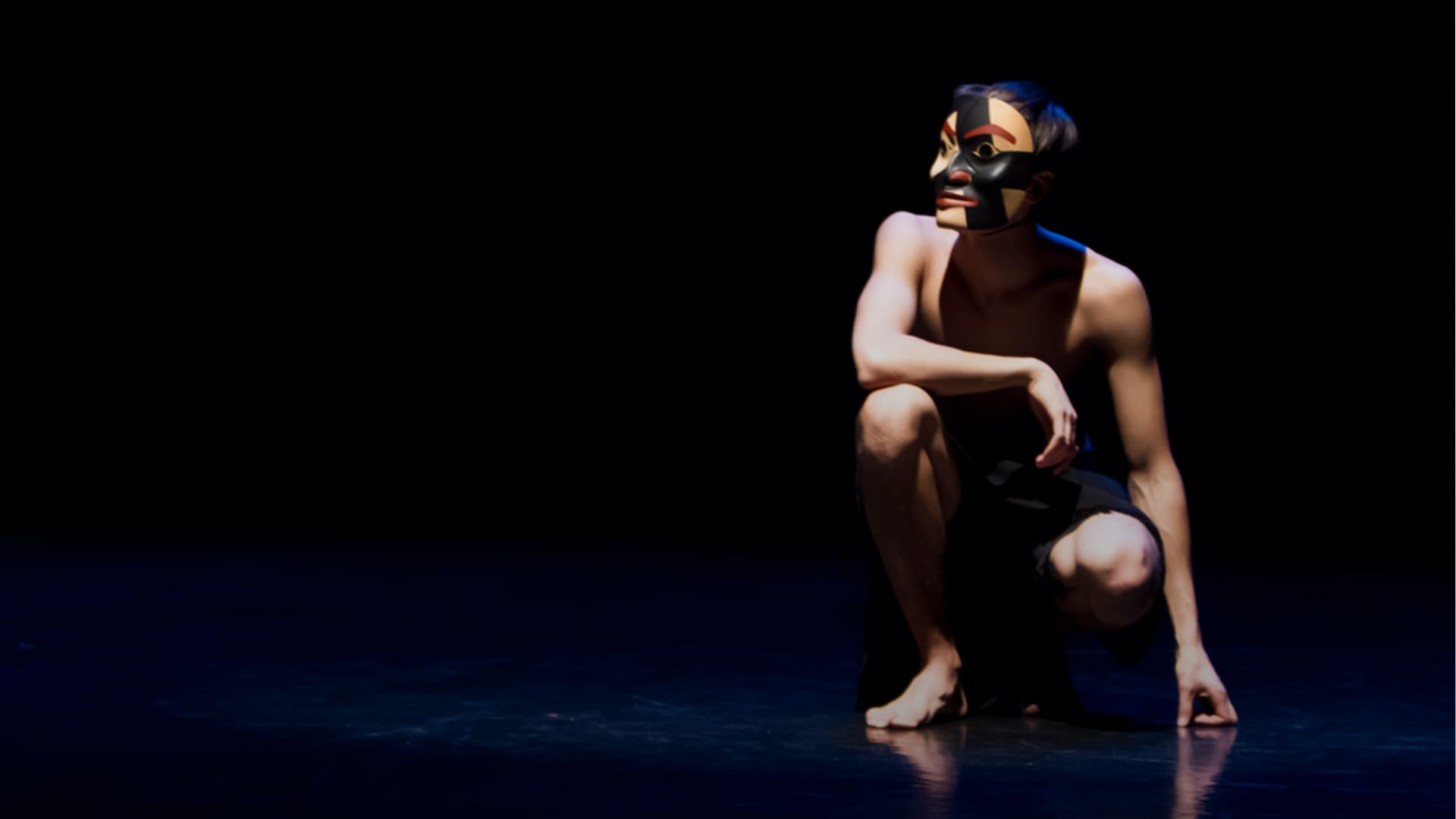
Company
About
For countless generations Indigenous dance played an integral part in defining art and culture. The Dancers of Damelahamid emerged in the 1960s out of an urgency to ensure that these artistic practices were not lost.
For countless generations Indigenous dance played an integral part in defining art and culture. The Dancers of Damelahamid emerged in the 1960s out of an urgency to ensure that these artistic practices were not lost.


Company Background
Dancers of Damelahamid is an Indigenous dance company founded upon over five decades of extensive work of song and dance revitalization. For countless generations Indigenous dance played an integral part in defining art and culture. In response to the lifting of the Potlatch Ban (1884 – 1951), was the resurfacing of dance and the awakening of an art form that was outlawed for almost 70 years. The Dancers of Damelahamid emerged in the 1960s out of an urgency to ensure that these artistic practices were not lost.
The Dancers of Damelahamid has since established itself as a leading professional Indigenous dance company. The company’s artistic approaches have contributed to its abilities to bridge creative practices and to work with innovative mediums, while maintaining commitment to the integrity of their artistic legacy. It is through continual and diligent practice that this dance form endures as non-static and relevant to current innovation, influence, and insights.
The Dancers of Damelahamid has produced several theatre-based productions and choreographed dance works, with their most recent production, Mînowin, premiering at the National Arts Center in Ottawa, ON. The company has produced the annual Coastal Dance Festival since 2008, presenting Indigenous dance from the Northwest Coast as well as hosting guest national and international Indigenous artists.
Company Background
Dancers of Damelahamid is an Indigenous dance company founded upon over five decades of extensive work of song and dance revitalization. For countless generations Indigenous dance played an integral part in defining art and culture. In response to the lifting of the Potlatch Ban (1884 – 1951), was the resurfacing of dance and the awakening of an art form that was outlawed for almost 70 years. The Dancers of Damelahamid emerged in the 1960s out of an urgency to ensure that these artistic practices were not lost.
The Dancers of Damelahamid has since established itself as a leading professional Indigenous dance company. The company’s artistic approaches have contributed to its abilities to bridge creative practices and to work with innovative mediums, while maintaining commitment to the integrity of their artistic legacy. It is through continual and diligent practice that this dance form endures as non-static and relevant to current innovation, influence, and insights.
The Dancers of Damelahamid has produced several theatre-based productions and choreographed dance works, with their most recent production, Mînowin, premiering at the National Arts Center in Ottawa, ON. The company has produced the annual Coastal Dance Festival since 2008, presenting Indigenous dance from the Northwest Coast as well as hosting guest national and international Indigenous artists.
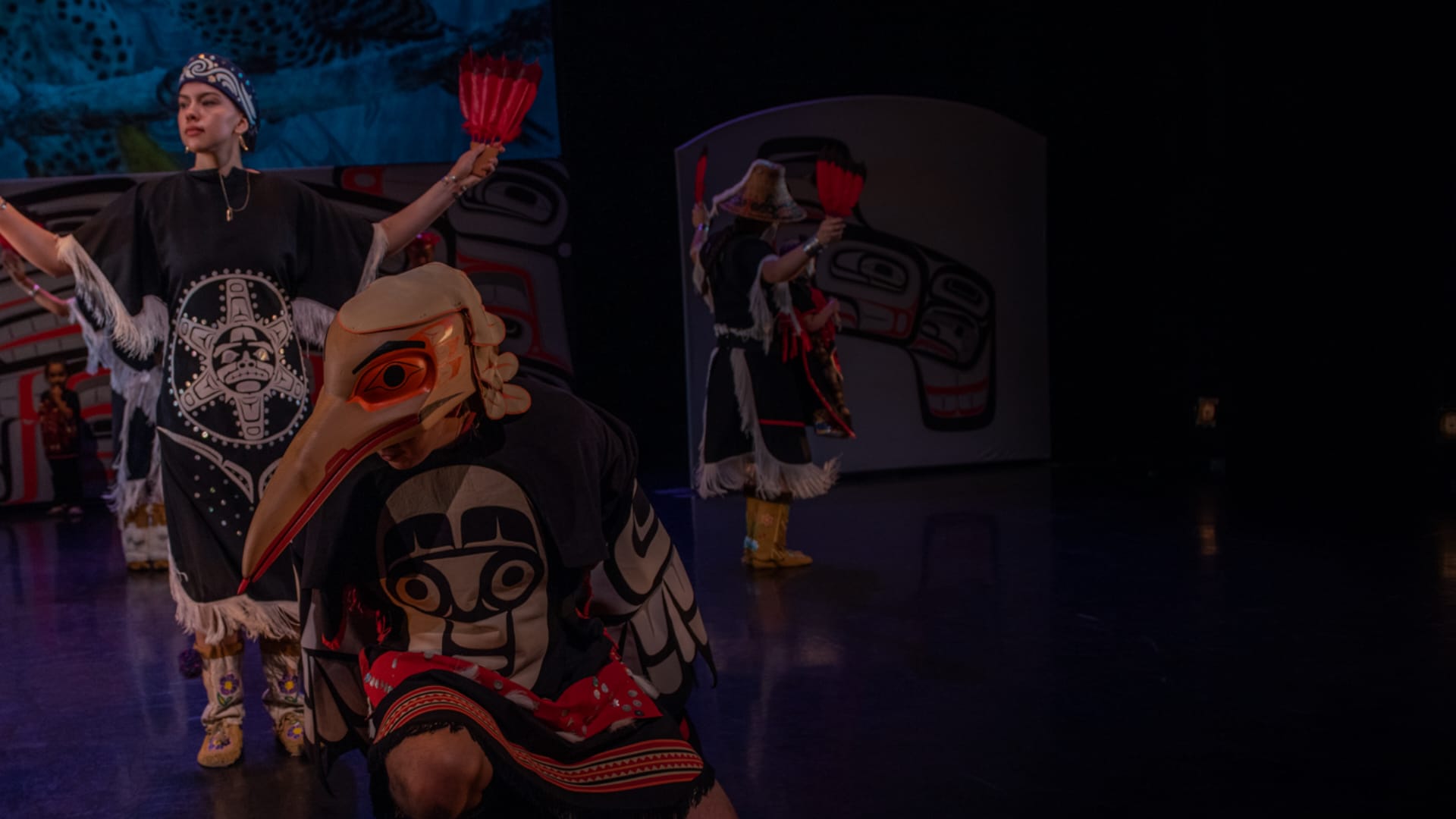
Mandate
To advance the public’s knowledge and appreciation of the art, history, language, and traditions of First Nations’ culture through story dance and song;
To educate the public about and increase cross-cultural understanding of First Nations’ heritage through dance performances at festivals, in educational institutions, and at other venues and public spaces; and
To advance education by providing instructional workshops on traditional First Nations’ dance to students at elementary, secondary and post-secondary schools.
Mandate
To advance the public’s knowledge and appreciation of the art, history, language, and traditions of First Nations’ culture through story dance and song;
To educate the public about and increase cross-cultural understanding of First Nations’ heritage through dance performances at festivals, in educational institutions, and at other venues and public spaces; and
To advance education by providing instructional workshops on traditional First Nations’ dance to students at elementary, secondary and post-secondary schools.
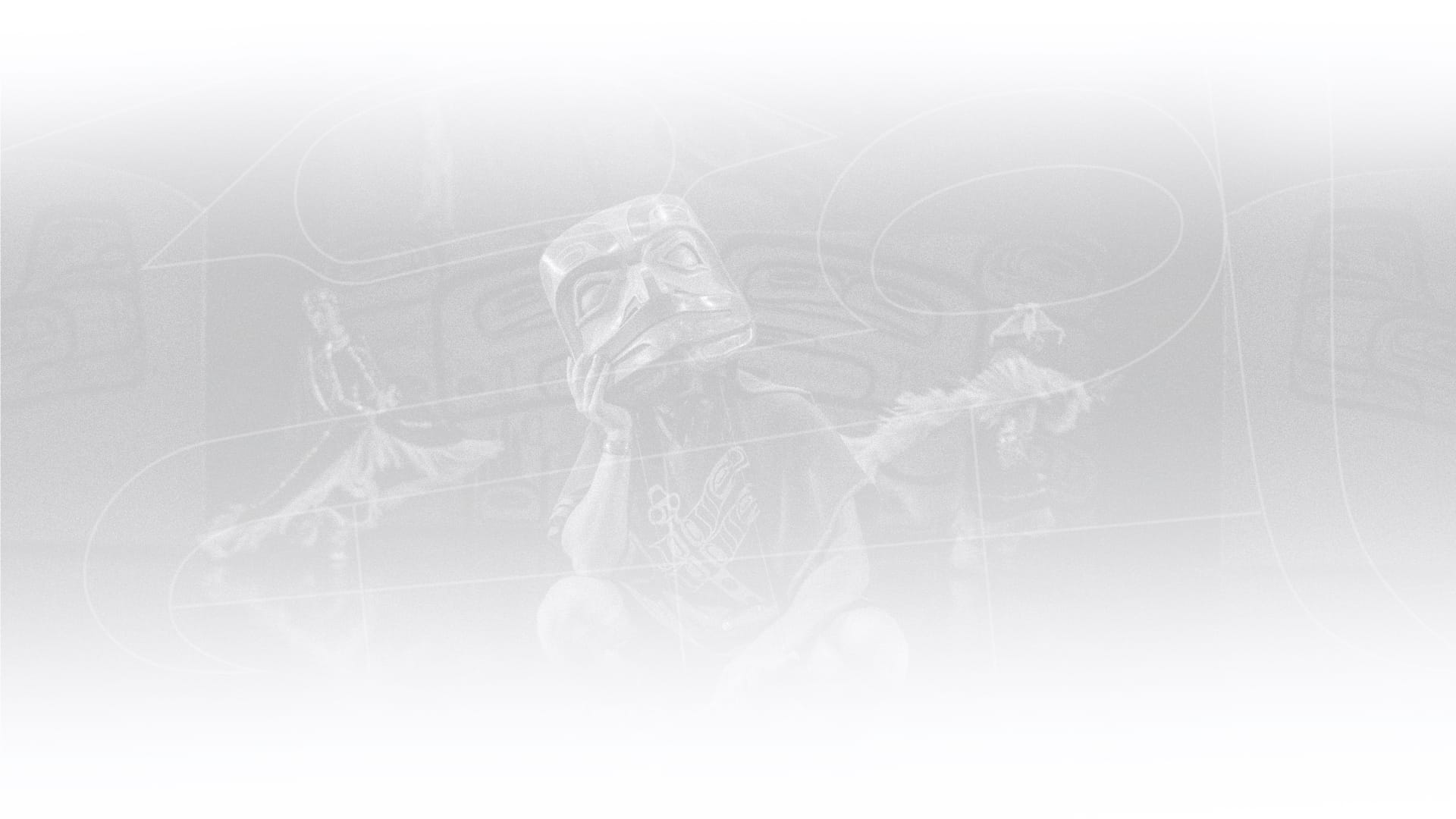
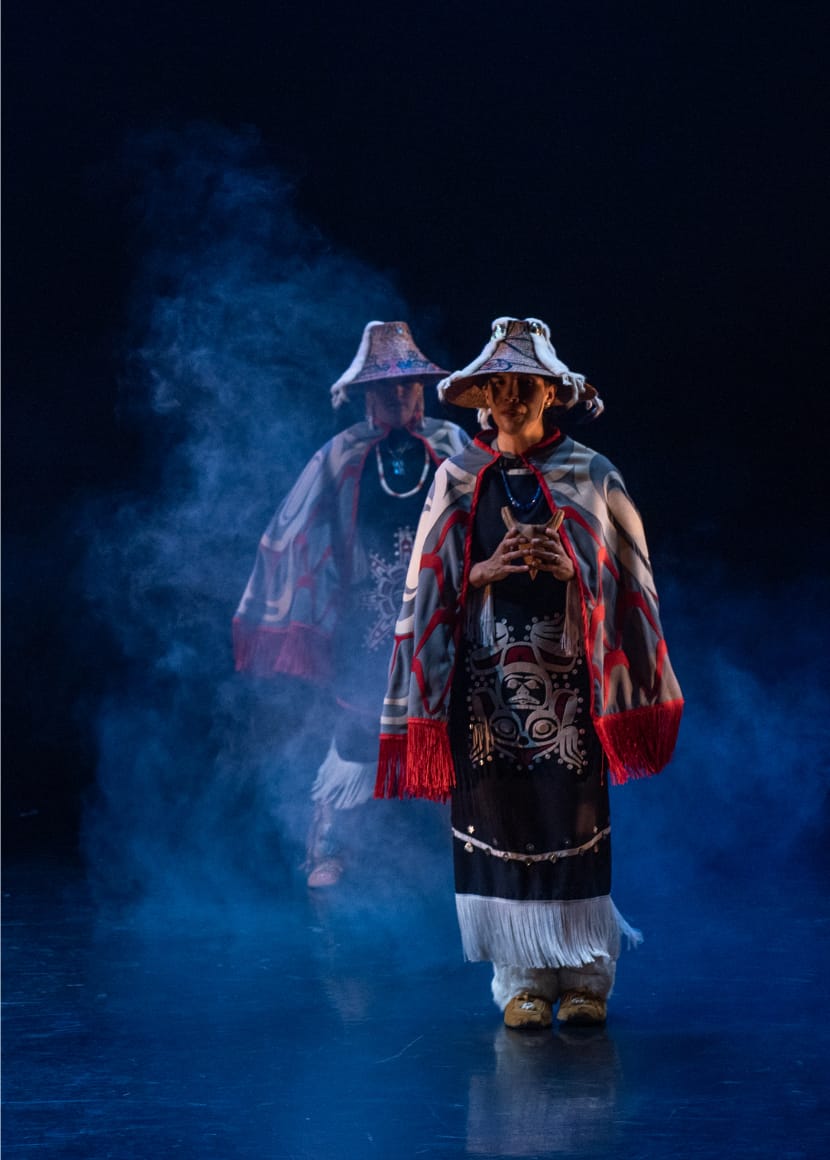
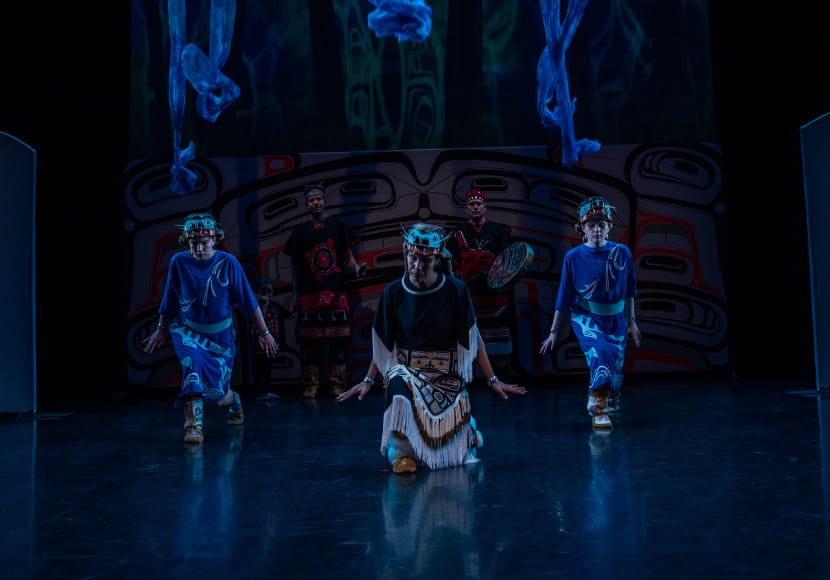
Artistic Statement
Growing up in a small community on the Northwest Coast of British Columbia, I was immersed from a young age in the practice of song and dance that had been passed down for countless generations. It was through this experience that I entered into a relationship with my ancestral memories. Today, as a dance artist, within a practice that interweaves many artistic disciplines, I have found a means to make a tangible connection with the stories and values that define us.
The work that I do as Executive and Artistic Director for the Dancers of Damelahamid is to ensure the continuation of what has been of such great importance to my parents and the generation that revitalized dance. I treasure dance as the most significant inheritance that I have, and it will be a life journey to strive to develop the art form to its potential. For me dance, song and story have provided a protective environment to address the limitations placed on our Indigenous peoples and to create a healing space. Our bodies, our thoughts, our emotional attachments and our prayers are connected through the ceremony of dance. In our performances we are not only turning to our ancestral knowledge for our own reconciliation, but we are sharing and supporting others through our art.
Artistic Director, Margaret Grenier
Artistic Statement
Growing up in a small community on the Northwest Coast of British Columbia, I was immersed from a young age in the practice of song and dance that had been passed down for countless generations. It was through this experience that I entered into a relationship with my ancestral memories. Today, as a dance artist, within a practice that interweaves many artistic disciplines, I have found a means to make a tangible connection with the stories and values that define us.
The work that I do as Executive and Artistic Director for the Dancers of Damelahamid is to ensure the continuation of what has been of such great importance to my parents and the generation that revitalized dance. I treasure dance as the most significant inheritance that I have, and it will be a life journey to strive to develop the art form to its potential. For me dance, song and story have provided a protective environment to address the limitations placed on our Indigenous peoples and to create a healing space. Our bodies, our thoughts, our emotional attachments and our prayers are connected through the ceremony of dance. In our performances we are not only turning to our ancestral knowledge for our own reconciliation, but we are sharing and supporting others through our art.
Artistic Director, Margaret Grenier

Land Acknowledgment
Dancers of Damelahamid cultivate and uphold relationships with the Indigenous communities upon whose territories their artistic practice takes place. The company primarily creates, presents, and produces Indigenous dance on the traditional, ancestral, and unceded territory of the Sḵwx̱wú7mesh (Squamish), xwməθkwəy̓əm (Musqueam), and the Tsleil-Waututh peoples.
Land Acknowledgment
Dancers of Damelahamid cultivate and uphold relationships with the Indigenous communities upon whose territories their artistic practice takes place. The company primarily creates, presents, and produces Indigenous dance on the traditional, ancestral, and unceded territory of the Sḵwx̱wú7mesh (Squamish), xwməθkwəy̓əm (Musqueam), and the Tsleil-Waututh peoples.

